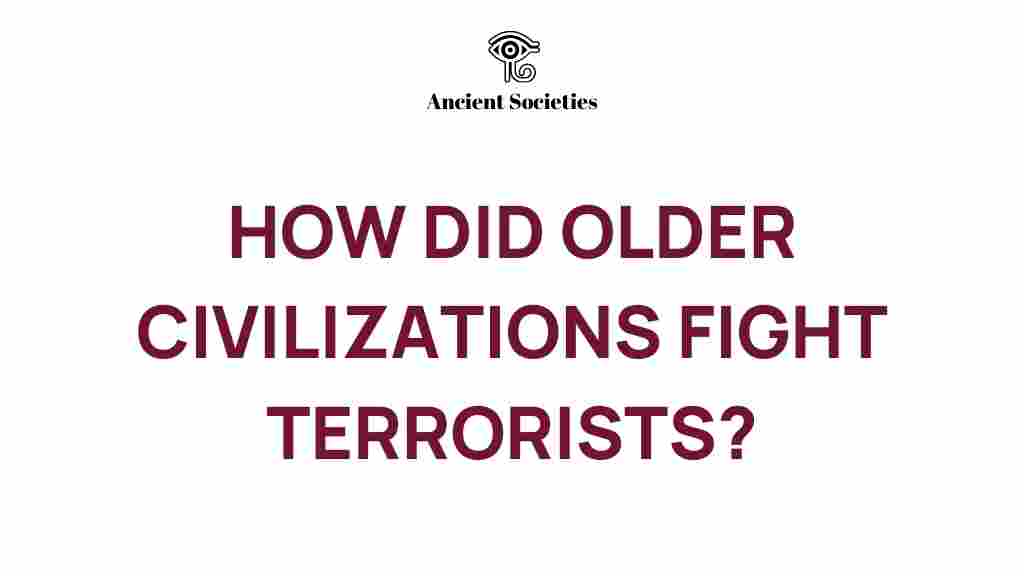Ancient Civilizations and Their Strategies Against Terrorism
Throughout history, ancient civilizations faced myriad challenges, among which terrorism and violent disruptions were prominent. The concept of terrorism, as we understand it today, may not have existed in the same form in ancient times, but the acts of violence, fear, and intimidation were present. This article delves into how ancient civilizations devised security strategies to combat such threats, drawing on historical warfare, military tactics, cultural resilience, conflict resolution, and societal responses.
Understanding Terrorism in Historical Context
Terrorism today encompasses a range of violent acts intended to instill fear and achieve political or ideological objectives. Ancient civilizations, too, faced similar threats from rival factions, insurgents, and external invaders. These acts often disrupted societal order and tested the resilience of communities.
To effectively analyze how ancient civilizations battled terrorism, we will examine specific case studies, notable military tactics, and the overarching security strategies that defined their responses.
Case Studies of Ancient Civilizations
Several ancient civilizations provide rich examples of how societies addressed the challenges of terrorism. Here are a few noteworthy cases:
- The Roman Empire: The Romans faced numerous uprisings and insurrections, particularly in provinces like Judea. Their response included a combination of military might and psychological warfare.
- The Assyrian Empire: Known for its brutal military campaigns, the Assyrians employed terror as a tactic against their enemies, utilizing fear to prevent rebellions.
- The Aztecs: The Aztecs dealt with internal strife and external threats through a combination of negotiation, tribute systems, and military action.
Military Tactics of Ancient Civilizations
Military tactics employed by ancient civilizations varied widely, but several common strategies emerged in response to terrorism-like threats:
- Fortifications: Building strong defensive structures like walls and citadels was a primary strategy to protect against external threats.
- Intelligence Gathering: Many civilizations engaged in espionage to understand potential threats and preemptively strike against insurgents.
- Psychological Warfare: Using intimidation tactics to demoralize enemies, such as displaying captured foes or spreading fear through propaganda.
Cultural Resilience and Community Response
Cultural resilience played a crucial role in how ancient civilizations responded to terrorism. Societies that fostered strong community bonds and cultural identity often managed to withstand and recover from crises more effectively. Some key aspects include:
- Shared Values: Cultivating a sense of belonging and shared purpose helped unify communities against common threats.
- Religious and Spiritual Practices: Many civilizations turned to religion for solace and guidance, reinforcing social cohesion during times of conflict.
- Conflict Resolution Mechanisms: Establishing systems for negotiation and mediation helped to address grievances before they escalated into violence.
Analyzing Historical Warfare Strategies
Historical analysis of warfare strategies reveals that ancient civilizations often adapted their military tactics based on the nature of the threat they faced. Here are some notable strategies:
- Guerrilla Warfare: Faced with larger, more powerful armies, smaller factions often resorted to hit-and-run tactics, ambushes, and sabotage.
- Alliance Building: Forming alliances with other tribes or city-states was a common strategy to bolster military strength against common enemies.
- Economic Disruption: Targeting the economic resources of adversaries, such as cutting supply lines, was another effective tactic.
Security Strategies in Ancient Civilizations
Ancient civilizations implemented various security strategies that laid the groundwork for modern approaches to counter-terrorism. These included:
- Militia Systems: Many societies relied on citizen militias to defend against threats, creating a sense of communal responsibility.
- Surveillance Systems: Monitoring for signs of dissent or invasion became a critical aspect of maintaining security.
- Legal Codes: Establishing laws to govern behavior and deter violence was essential in fostering a stable environment.
Troubleshooting Tips from Historical Lessons
As we look at how ancient civilizations dealt with terrorism, several key lessons emerge that can inform modern practices:
- Adaptability: The ability to adapt tactics and strategies in response to changing threats is crucial.
- Community Engagement: Involving local communities in security efforts can enhance resilience and trust.
- Prevention over Reaction: Fostering dialogue and addressing grievances before they escalate into violence is more effective than reactive measures.
Conclusion: Learning from Ancient Civilizations
In conclusion, ancient civilizations faced significant challenges from terrorism-like threats, and their responses provide valuable insights into modern security strategies. Through a combination of military tactics, cultural resilience, and innovative conflict resolution methods, these societies managed to navigate complex landscapes of fear and violence.
By studying the historical analysis of these ancient approaches, we can glean lessons that remain relevant today. As we face contemporary challenges, understanding the past equips us with the tools to foster security, resilience, and peace in our societies.
For more insights on historical warfare and security strategies, visit this resource or check out related articles on our site here.
This article is in the category History and created by AncientSocieties Team
